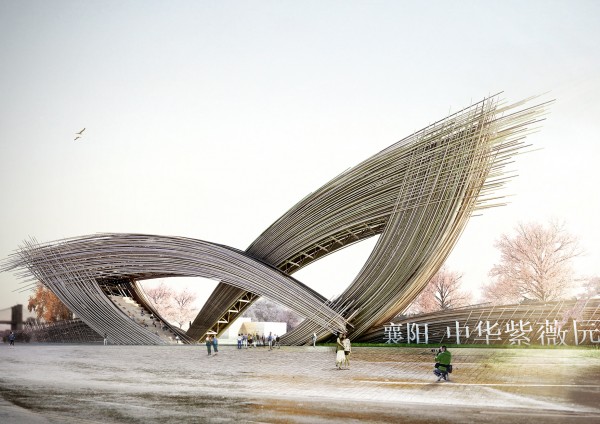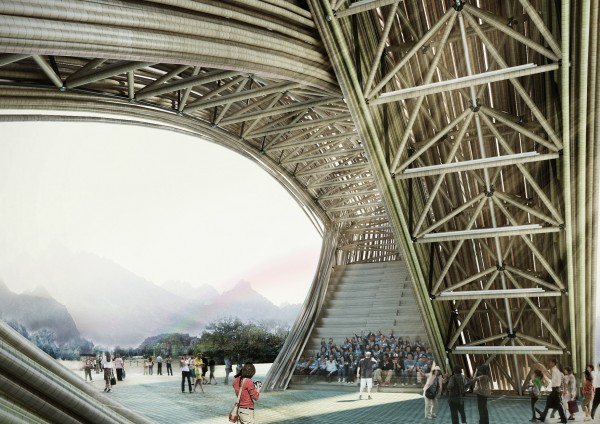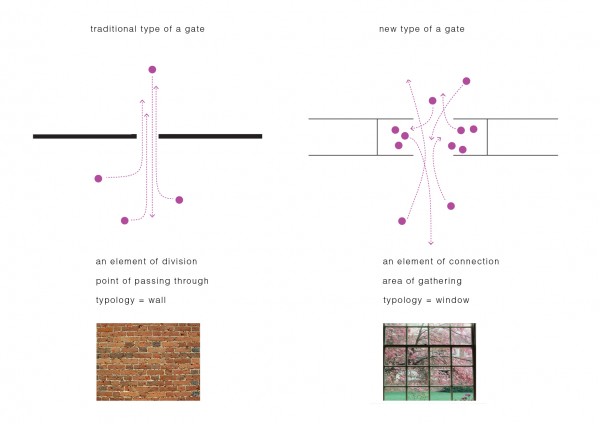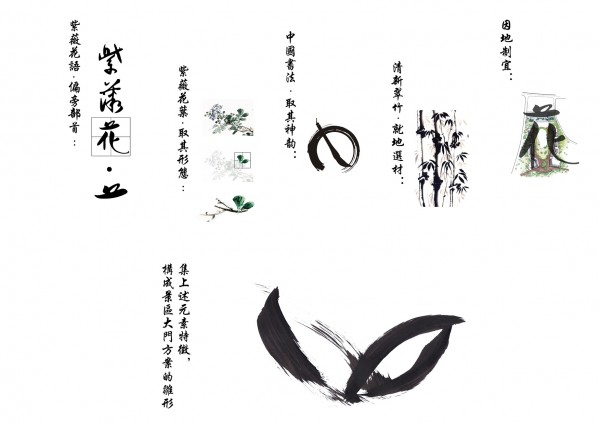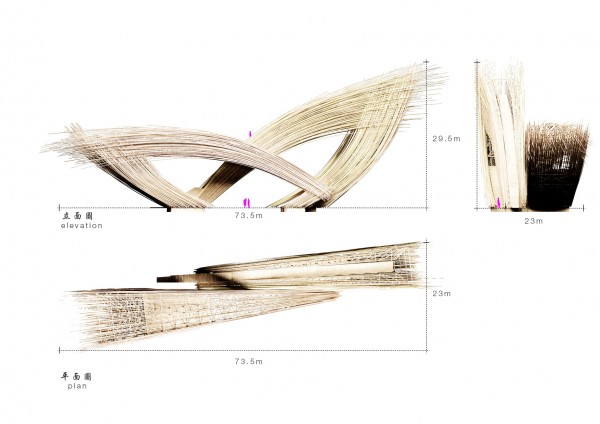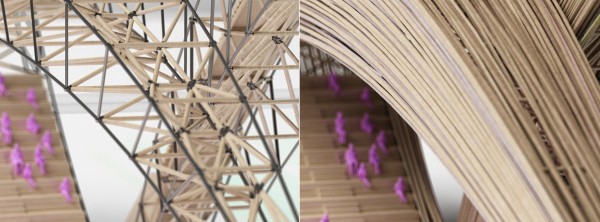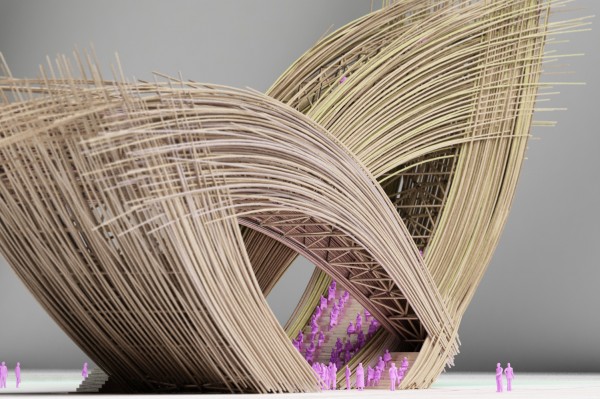The ‘blossom-gate’ by the Vienna-based designhouse prechteck defines a landmark to the entrance of the largest chinese myrtle garden in the City of Xiangyiang. Prechteck tries to reinvent the gate as an architectural typology underlining the connecting characteristics of a former dividing element. Formalistic Inspirations lay in the chinese tradition of Caligraphy, the context and its topographie and flower-blossoms as a theme for the garden.
1) The gate as a typology
As a typology, the main function of a gate is a dividing one, seperating the inside from the outside. On the other hand, a gate is also the only a connecting element, guiding people to a certain point , where the inside and the outside get unified. The design is not just about the link of the inside with the ouside, but also about the connection of its visitors – the gate as an area of gathering, instead of a point of passing through.
2) A gate for Xiangyang
The structure serves as a gate to the flowerpark of Xiangyang, a city famous for its nature, tradition and writers. Our design shows a tribute to those. Inspired by the shape of the a flower, two blossoms define the gate, honoring the beautiful landscape of the area.
As the structure arches over, bundle of bamboo on the ouside create a majestic volume of light in the ‘inbetween – space’. This space not only serves the flower garden as an entrance gate and meeting point for visitors, but also can be used as a sheltered void which serves the community for concerts or lectures. From the outside, the ‘blossom-gate’ is a symbol for unity and harmony and for sure a desired background for wedding pictures in the flower garden.
As a brush fades out at the end of each stroke, the gate also is defined by this beaty of a non-perfect, non-coninous line connecting the building to its heritage and to the tradition of chinese calligraphy, the city is famous for.

